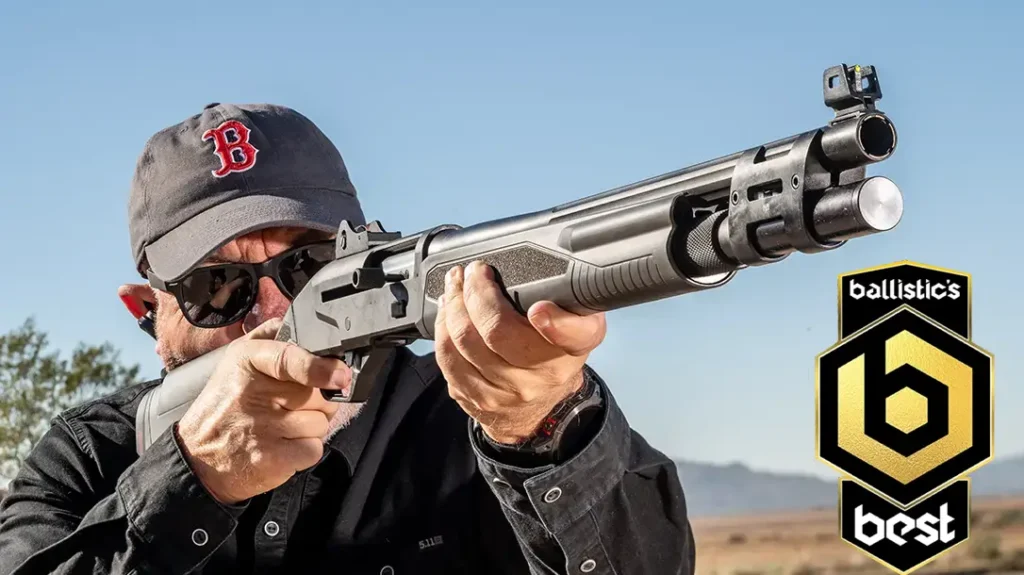Firing the G29 one-handed at seven yards range, I shredded the middle of an empty 16-ounce tin can with ease. Part of that was due to Glock improving its trigger pull. Another part was that my eyes get along well with Glock’s white outline rear sight and white dot front sight. But there is more to the Glock G26 Gen 5 subcompact. Lots more.
The Glock G29 Gen 5 Subcompact
The G29 is called a subcompact, but that doesn’t change the fact that it’s a bulky beast of a pistol. This despite measuring about 4.5 inches high and 7 inches long and only weighing 2 pounds, 1.7 ounces, with a full load of eleven rounds of Federal Premium 200 grain Syntech ammo. I can actually slip this cannon into my front pants pocket.
The G29 has the same 1.3-inch maximum grip frame thickness as a 9mm G19. However, it is a full 0.13 inch thicker in the slide. On the double-stack magazine models, I’ve noticed that Glock scales its slides to the caliber. For example, .380ACP and 9mm slides are 1.00 inch thick, and .40 S&W slides are 1.08 inches thick.
Advertisement — Continue Reading Below
At 1.13 inches thick, the .45ACP and 10mm slides appear massively overbuilt when examined alongside a standard M1911 slide. Glock’s square slide has a lot of excess metal. But in this case, I think it’s an asset for two reasons: recoil management and strength.
By my third shot, one-handed, I was beginning to feel a tingle in my wrist that hadn’t manifested itself when I was shooting with a two-hand hold. The Federal Syntech wasn’t even a maximum load for the 10mm, which can approach the muzzle energy of .41 Magnum.
The 10mm isn’t for everyone, but it’s not nearly as hard to handle as you might fear.
Advertisement — Continue Reading Below
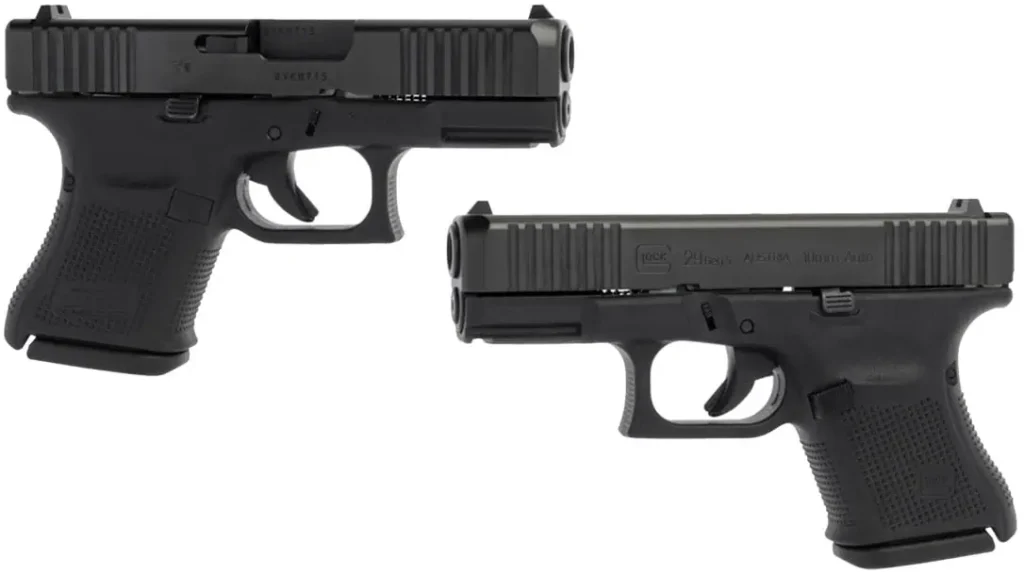
Running Big Bore 10mm
A long time ago, I bought a snubnosed S&W 640 in .357 Magnum for self-defense. Shooting it was actually painful. Its vigorous recoil led me to conclude that unless my next target was a bird, accurately placing a quick follow-up shot was highly unlikely.
Switching to a snubnose in mild-mannered .38 Special really dialed back the recoil. It got me to where I felt I needed to be in terms of speed and accuracy. I offer this preface to illustrate that often, the best self-defense handgun is not the heaviest hitter.
Advertisement — Continue Reading Below
The FBI had high hopes for the 10mm, but it turned out to be a little too powerful for them. Unfortunately, for this excellent cartridge, I feel the general public feels the same way. You really don’t know until you try it.
A 10mm typically has bullet weights between 170 and 200 grains, all of which have noticeably more recoil than 9mm. 9mm typically uses bullets ranging from 115 to 124 grains, with 147 grains being the most common outlier on the heavy side.
For comparison purposes, the muzzle energy of the most common 9mm loads, when fired from pistols, falls between 300 and 400 foot-pounds. However, 10mm loads range from 550 to 750 foot-pounds. The standard .357 Magnum load propelling a 158-grain bullet at 1,240 feet-per-second produces 539 foot-pounds of energy at the muzzle.
Advertisement — Continue Reading Below
If you are comfortable shooting a .357 Magnum in a 4-inch medium-frame revolver, I expect you’ll think 10mm recoil in an autoloader is easier to deal with.
Feeding the G29 Gen 5
The general bulk of the Glock G29 is not to its advantage for concealed carry. But its firepower is tough to top in such a small package. 10mm doesn’t have the range of loading as 9mm. However, there’s still plenty of factory ammo available for you to find something within your tolerance for recoil.
The heaviest load I tested was Federal Premium’s Syntech 200 grain, truncated cone, hard lead, blue polyester-clad bullet. This bullet is intended for use against dangerous predators and is designed for deep penetration with a flat point to increase energy transfer from the bullet to the target.
Advertisement — Continue Reading Below
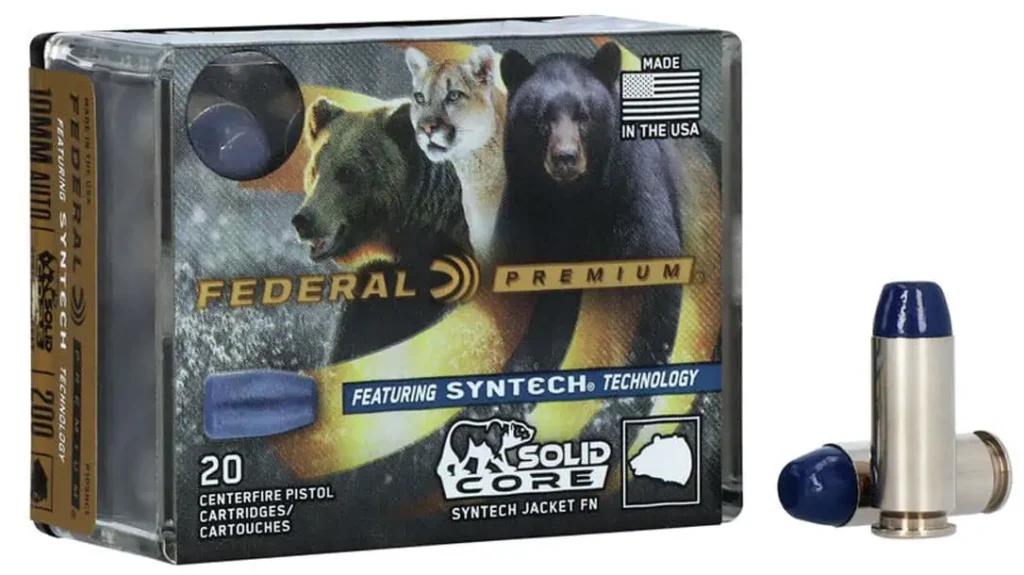
The plastic jacket adds lubricity, which should give you more velocity for the same chamber pressure and reduced barrel wear.
Federal Premium Syntech Round
I intended to pull the Federal Syntech bullet and see how hard it is with my SEACO lead hardness tester. It turned out that I didn’t need to pull a bullet at all because I discovered one, and only one, in the dirt backstop. There was virtually no deformation beyond a scratch on the edge of the flat tip.
Advertisement — Continue Reading Below
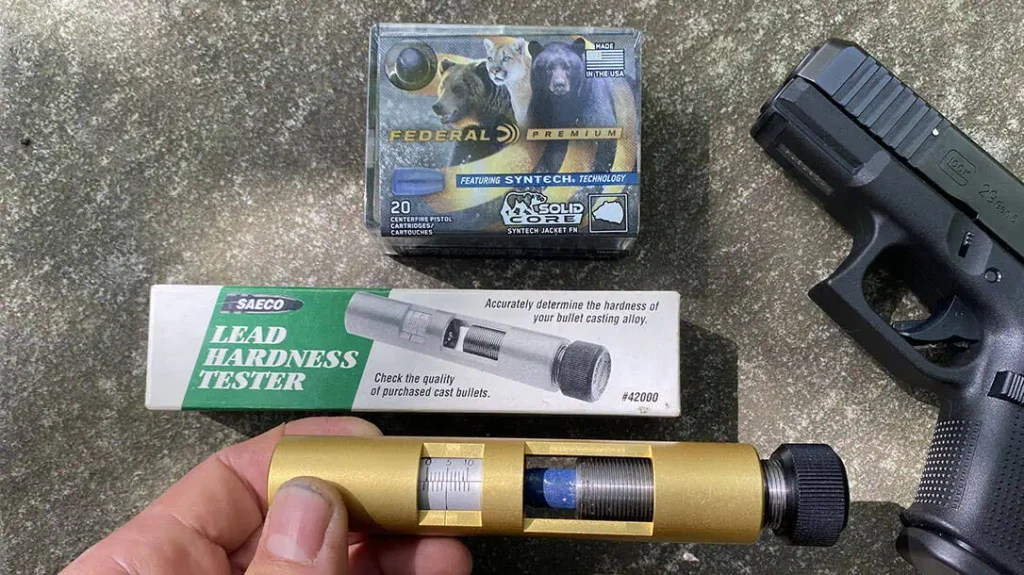
The SEACO tester showed it had a Brinnel hardness of 9. This is equivalent to the wheel weight alloy most bullet casters use for hard projectiles.
My recovered Syntech bullet’s tough plastic jacket wasn’t cut during its brisk journey through the G29’s 3.78-inch barrel. The sides showed distinctive narrow lines from Glock’s new polygonal rifling used in the Glock Marksman Barrel (GMB).
Advertisement — Continue Reading Below
This isn’t conventional polygonal rifling, which looks like a shallow sine wave at the crown. Instead, the GMB has flat-backed grooves, that aren’t curved to match the barrel’s exterior wall, which are well-defined from the lands.
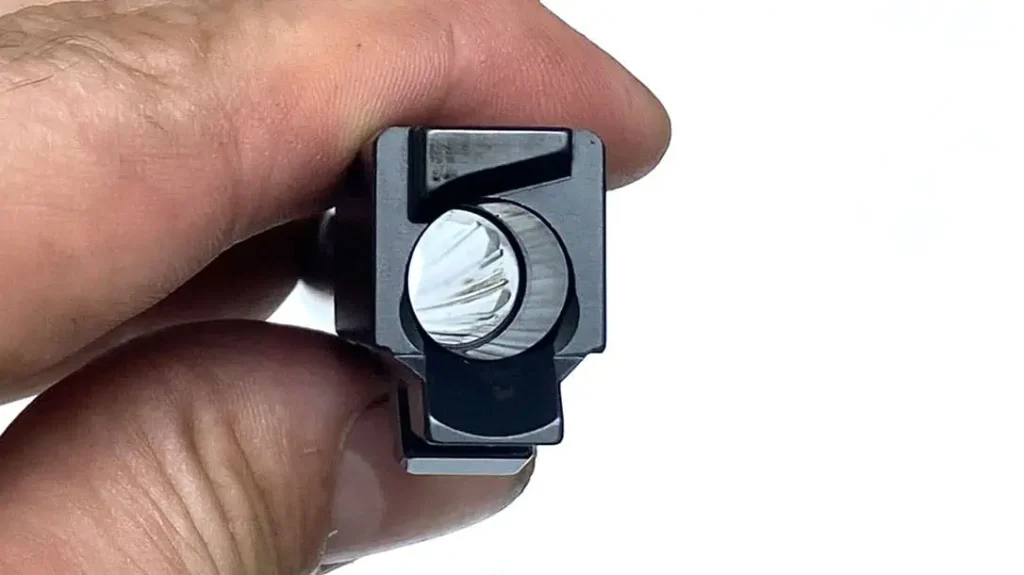
The lands appear to dip in the center and rise on each end to form narrow, sharp edges where they meet the grooves. What advantages it offers over traditional polygonal rifling, I can’t say with certainty.
Advertisement — Continue Reading Below
Shooting the G29 Gen 5 Pistol
The G29 demonstrated good accuracy, firing a shot group from the bench at 25 yards. Federal Premium’s Syntech 200 grain averaged 2.39 inches and 571 foot-pounds of muzzle energy.
If you carry a .44, .41, or .357 Magnum revolver when working and hunting where bears and mountain lions are prevalent, consider that the G29 is considerably lighter and smaller. Likewise, it offers you 11 ready shots instead of six, is much faster to reload, and can pack a heavy punch in its own right.
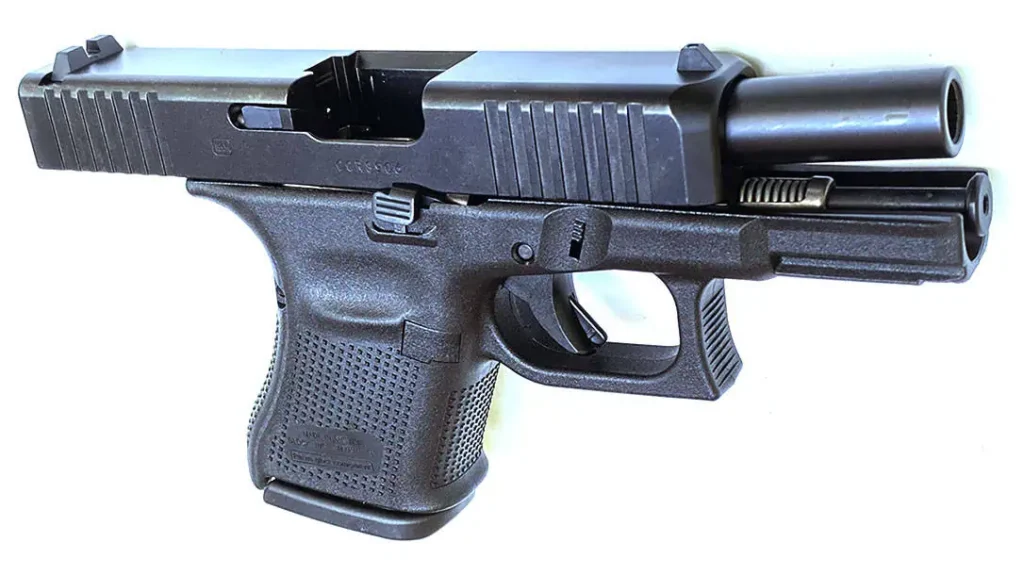
Fiocchi Range Dynamics 180 grain FMJ truncated cone bullet, one of the more economically priced loads in this caliber, averaged 3.68 inches and 553 foot-pounds of muzzle energy. Hornady American Gunner 155 grain XTP JHP loads averaged 3.95 inches with 573 foot-pounds of muzzle energy.
At an average velocity of 1,291 feet per second, the Hornady load is equivalent to a full-power 158-grain .357 Magnum load but is easier to shoot quickly. It would be a great choice for concealed carry.
Like other Gen 5 Glocks, the G29 has ambidextrous slide hold open release levers and a reversible magazine release button. In addition, it features slide serrations at the front and rear, no finger grooves on the front strap of the grip, and offers shooters their choice of three easy-to-switch-out backstraps.
With a pistol whose grip generally allows a man with average-sized hands only a two-finger hold, the ability to customize the grip shape is much appreciated. Another notable Gen 5 feature is the recessed crown on the new GMB barrel. It helps protect this accuracy-critical part of the rifling from damage.
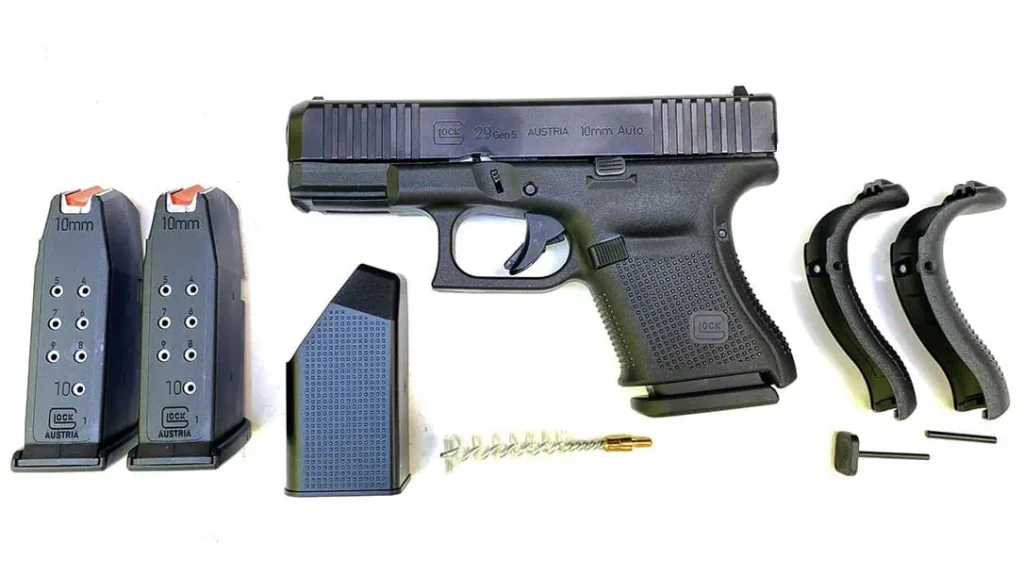
One thing this model currently doesn’t have is an MOS option for easy mounting of a red dot sight.
Final Thoughts
One last consideration when thinking about a 10mm pistol for concealed carry is that a gun is useless for self-defense if you don’t have it with you when you need it.
A full-size, 5-inch barrel, Colt Delta Elite 1911 weighs 11.5 ounces more than the G29 and has a magazine capacity of only eight rounds. I cannot slip a full-size 1911 into my front pants pocket.
For more information, please visit US.Glock.com.
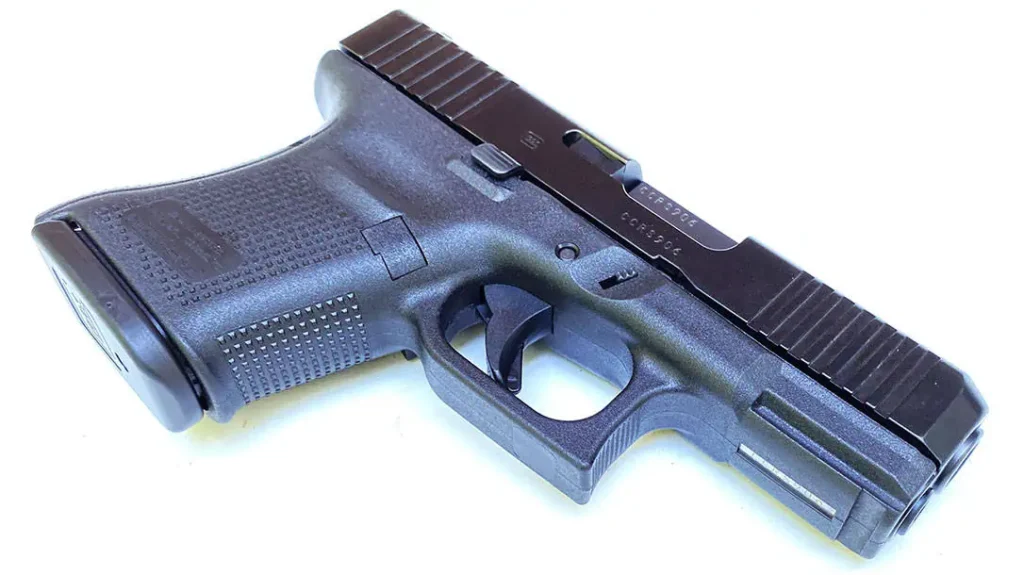
Specifications: Glock 29 Gen 5 Subcompact 10mm
| Caliber | 10mm |
| Operation | semi-auto, locked breech blowback, striker-fired |
| Capacity | 10-round magazine +1 |
| Barrel Length | 3.78 inches Glock Marksman polygonal groove barrel |
| Overall Length | 6.93 inches |
| Overall Height | 4.53 inches |
| Width | 1.38 inches |
| Weight | 26.8 ounces empty |
| Trigger | two-stage, 6.5-pound pull measured |
| Sights | Glock plastic white outline, windage drift adjustable rear, and white dot front. |
| Accessories | Glock Logo plastic case, 2 extra rear grip-strap adapters to customize circumference, 2 extra 10-round magazines & loading tool, bore brush, cable lock. |
| MSRP | $745 |
Performance
| Brand | Bullet Weight & Type | Velocity | Best Group |
| Federal Premium Syntech | 200 polymer Jacketed flat point | 1,134 | 1.83 |
| Fiocchi Range Dynamics | 180 FMJ truncated cone | 1,176 | 2.37 |
| Hornady American Gunner | 155 XTP JHP | 1,291 | 2.90 |
Performance was tested with a series of five-shot groups fired at 25 yards from a bench rest with a Competition Electronics Pro-Chrono Digital Chronograph set 15 feet from the muzzle. Bullet weight is in grains, velocity in feet-per-second and the group size in inches.




